The season of Kambarang

In the south-west of Western Australia the Noongar people follow a yearly calendar with six seasons: Birak, Bunuru, Djeran, Makuru, Djilba and Kambarang.

Signs of Kambarang
Kambarang is the second spring, the time of wildflowers and season of birth. There are longer periods of dry weather now from October to November.
The burst of growth from Djilba continued, and I saw different wildflowers appearing in the bush such as the purple flag, mulla mulla and fringe lilies. The yellow candlestick banksias were bright pops of yellow against the blue sky and little paper daisies (everlastings) peppered the ground. Impressive balga (grass tree) spikes began to flower. The orchids and kangaroo paws dried up and blended back into the grassy bush background. The moodjar (West Australian Christmas tree) started bursting into its' fiery glory like beacons in the bush.
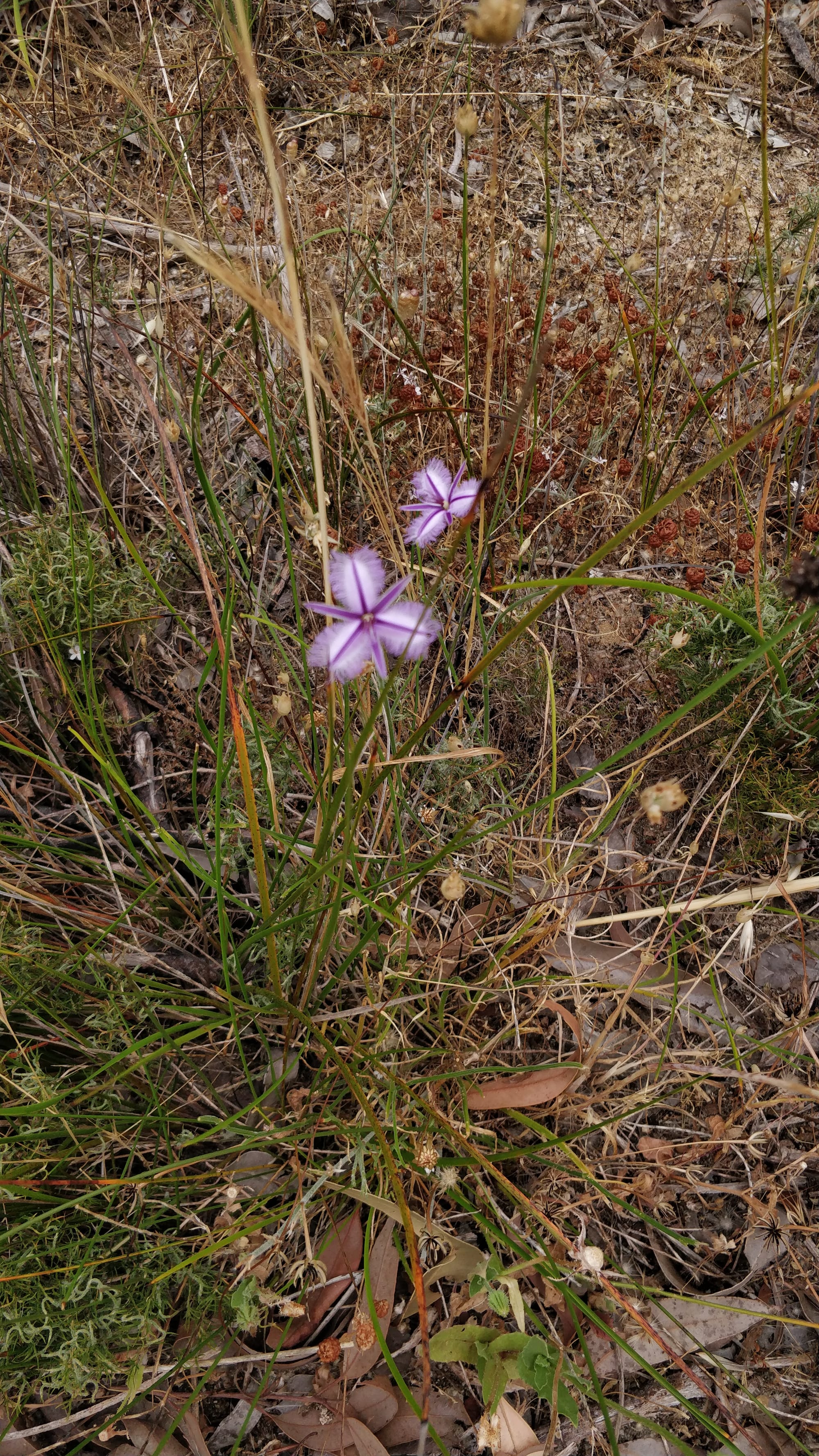


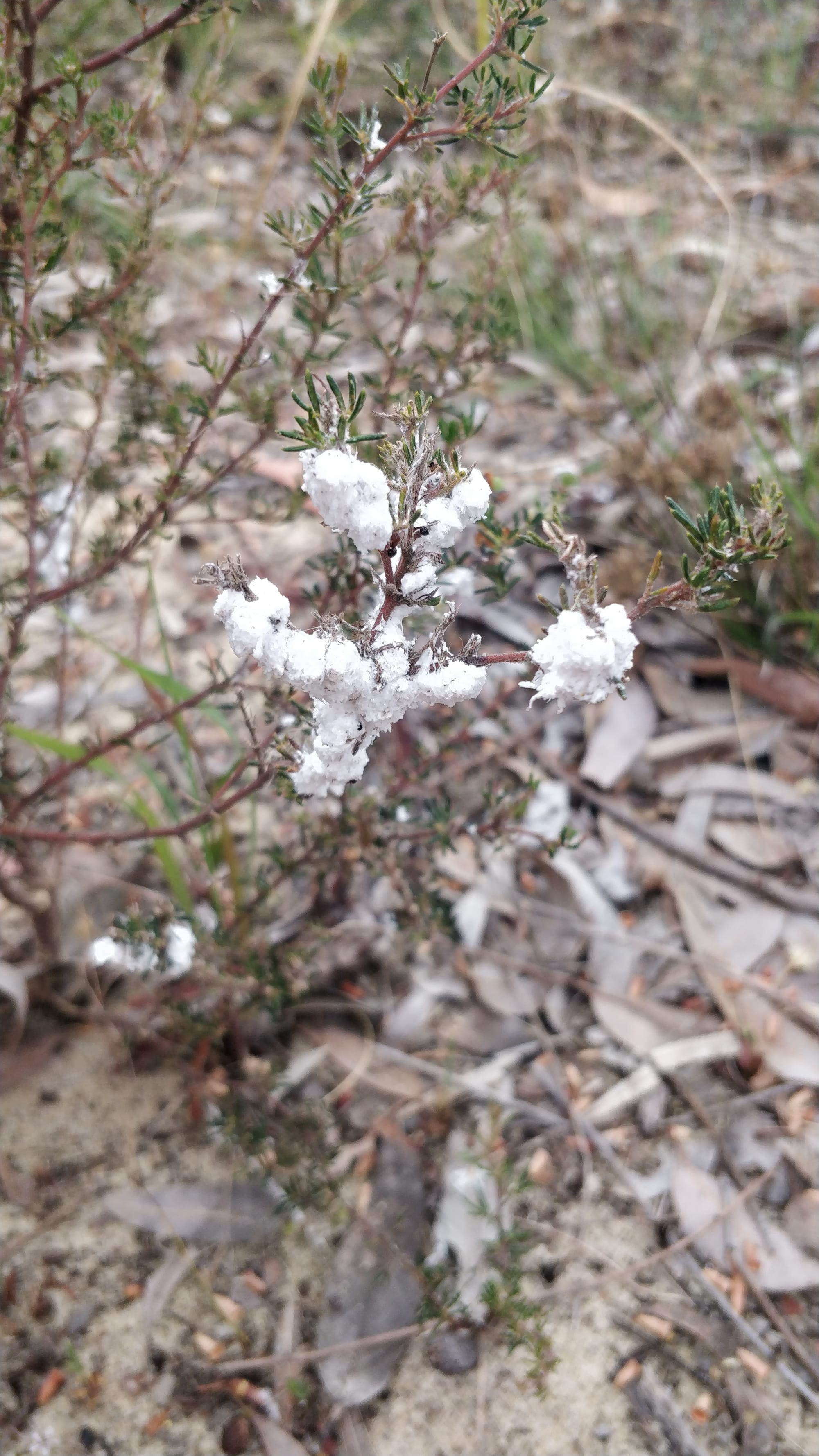





Warwick Bushland during Kambarang.
A family of ravens visited my backyard and I noticed many other baby birds calling their parents for food including the wattle birds and water birds. A black swan with fledgling cygnets and wood duck families visited the Herdsman Lake Discovery Centre. I heard frogs calling and crickets or cicadas too on warm days.
Just over halfway through November, Perth experienced a record-breaking heatwave period. With a typical mean maximum of 26.8°C (this year it was 30.4°C), having 10 consecutive days over 30°C felt unreal, as if we'd time-travelled into the peak of summer, when it hadn't even officially begun yet! The hottest day reached a scorching 39°C, and the minima weren't much better: the mean for November is 14.4°C but this year it reached 17.2°C.
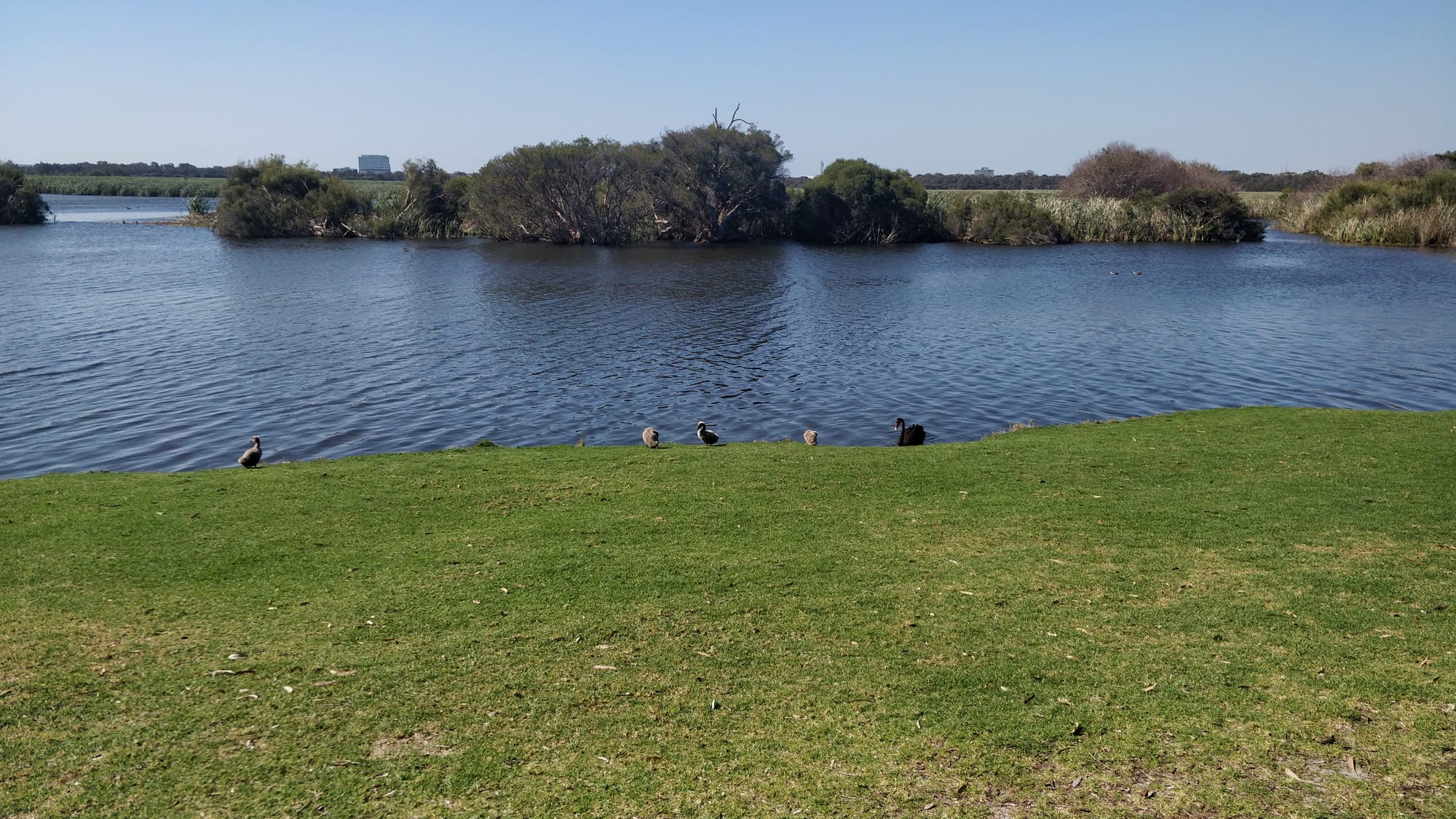




Water bird families, a nesting turtle and a nature treasure (insect eggs?) on a leaf.
On one of these extremely hot days I noticed a long-necked turtle nesting and wondered why it was out in the middle of the day during the heat - it was the first adult turtle I'd seen there and thought they typically laid eggs at night?
In my nature journal
I went for a walk in Warwick Bushland on 22nd October, only a few weeks after I'd first visited it and could already see drastic differences in the bush. The wildflowers had changed and I also noticed a white fungus or mould that stuck to shrubs (or was it perhaps eggs?).

I was able to observe a young raven, noticeable due to the red, fleshy parts around its beak and incessant calling, when it arrived in my backyard with its family. I really enjoyed making quick gestural sketches with the Pentel brush pen (that I'd been using for Inktober) as they hopped about, scouring the grass.


Observing a family of ravens.
Here are my other nature journal entries during Kambarang:
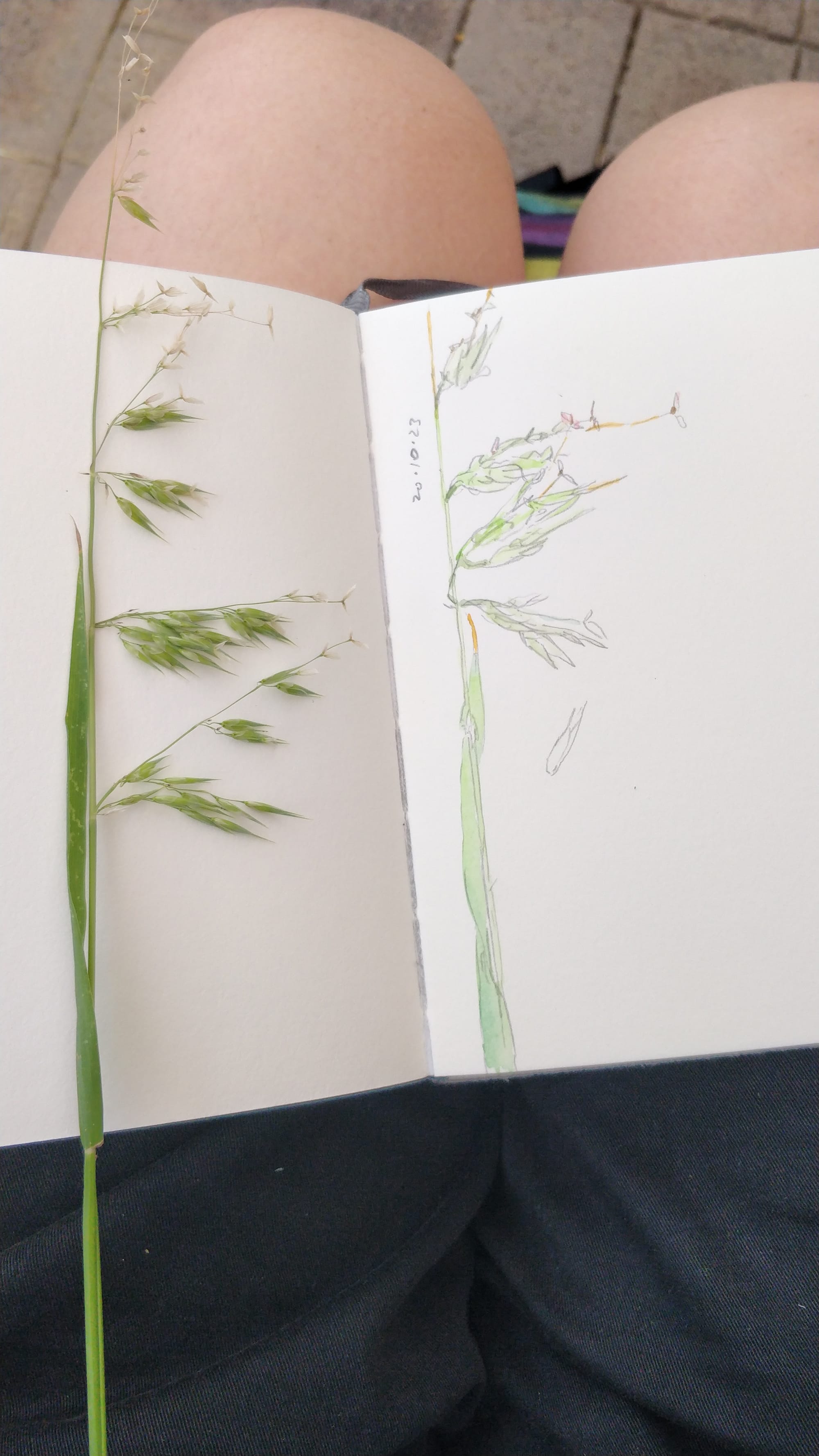


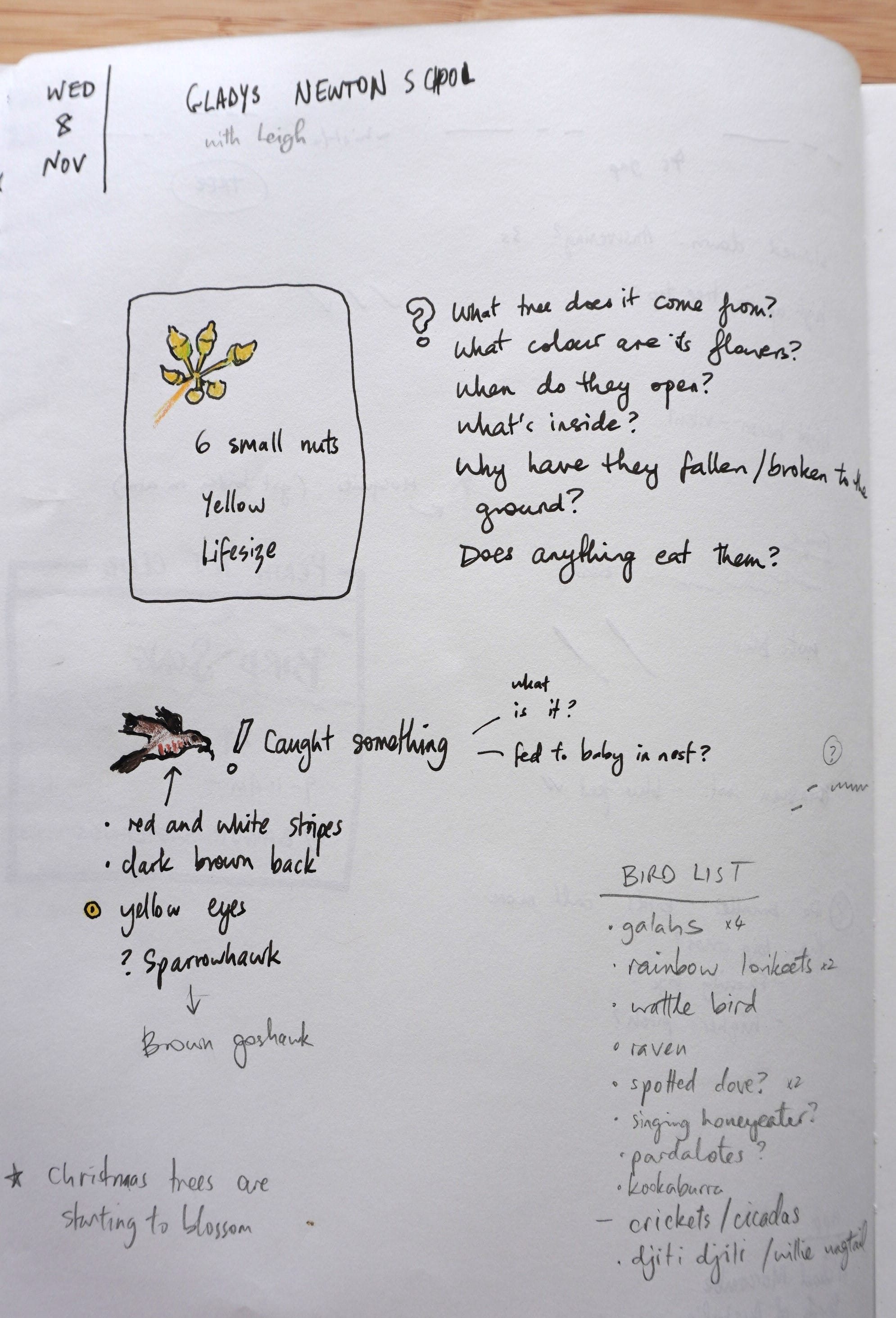

Other nature journal pages during Kambarang
Discussion
With Kambarang over, we're back to Birak again! A full year, six seasons and a lot more awareness of what the environment around me is like throughout the different times of the year. Overall I feel like the seasons were already changing by the end of the second month, and I'm interested to know if this is typical, or if the seasons are changing earlier than they usually do. I do intend to keep up the practice of journaling the changes in animal behaviour, flowers, trees and weather in my nature journal, as well as work more in my perpetual journal.
Have you ever tracked the seasons? Share how you did this and something you learned from the experience in the comments below, I'd like to find out how others structure their pages for this. (I know Clare Walker Leslie has some seasonal exercises in her books for example, that I might try in future.)
Try this: If you would like to follow a similar seasonal project then create a spread for each season (or 1-3 months) and record your observations of the changing signs of nature. Write or draw any new flowers, animal behaviour, changing weather etc. When you go for walks or are driving make lists of what you notice. Compare to previous years if you are in the same location, or see how new locations differ.




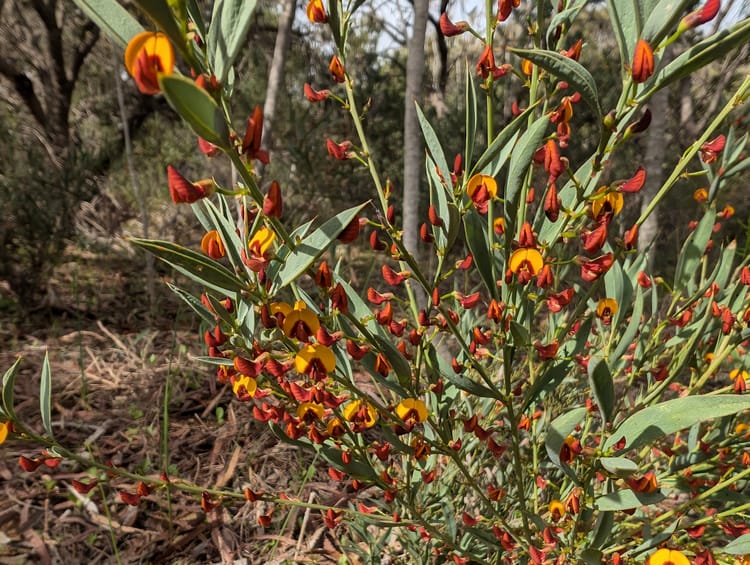
Member discussion